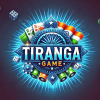Introduction Publishing a book marks a major creative and professional achievement. Whether it’s fiction, memoir, academic work, or business insight, the final product reflects months or years of thought, writing, and revision. But finishing a manuscript is only the beginning. Turning it into a globally accessible, professionally polished book involves a range of processes that
Introduction
Publishing a book marks a major creative and professional achievement. Whether it’s fiction, memoir, academic work, or business insight, the final product reflects months or years of thought, writing, and revision. But finishing a manuscript is only the beginning. Turning it into a globally accessible, professionally polished book involves a range of processes that go far beyond writing.
Today’s publishing landscape has transformed significantly, empowering authors to retain more control while reaching broader audiences. Print and digital technologies, coupled with global distribution networks, now make it possible for independent authors to publish books that stand alongside traditionally published titles in quality and visibility. However, to succeed, authors must navigate publishing decisions strategically, from production to promotion.
From Manuscript to Market: The Core Publishing Journey
The journey to publication begins with a clean, final draft. Editing and refining the manuscript for clarity, coherence, grammar, and narrative flow is essential. Most professionally published books go through multiple editing phases, including developmental editing, line editing, and proofreading.
After editing, authors move into the production phase, which includes:
- Interior Formatting: A well-structured layout for both print and eBooks is crucial to readability. This includes attention to typography, spacing, and proper navigation (especially in digital formats).
- Cover Design: Covers are often the first impression a potential reader has. Professional design ensures the book meets genre expectations and attracts attention while conveying the content’s tone.
- Metadata Preparation: Titles, subtitles, keywords, and book descriptions are optimized for search engines and online retailers to improve discoverability.
- ISBN & Copyright Registration: Securing an ISBN and registering the book protects the author’s rights and facilitates listing in catalogs and libraries.
These steps help ensure that the book not only looks polished but also meets the technical standards required by major distributors.
Print and Digital Options: Offering Multiple Formats
Readers today expect choices. Some prefer the tactile experience of print; others want the convenience of eBooks on their devices. To meet this demand, authors often publish in multiple formats:
- Paperback: A cost-effective, portable format ideal for both fiction and nonfiction.
- Hardcover: Adds durability and prestige, especially suitable for libraries and collectors.
- eBook: Allows global, instant distribution and is compatible with major platforms like Kindle, Apple Books, Kobo, and more.
- Print-on-Demand (POD): Enables books to be printed as needed, reducing upfront costs and eliminating warehousing.
By offering a mix of these formats, authors widen their potential reach and accommodate the preferences of diverse audiences.
Global Distribution and Accessibility
Getting the book in front of readers means more than listing it online, it requires strategic distribution. This includes leveraging platforms that can make the book available not just locally, but worldwide.
Major distributors allow authors to list their books across:
- Online retailers like Amazon, Barnes & Noble, and Books-A-Million
- International platforms in the UK, Europe, Asia, and Australia
- Libraries and academic institutions
- Independent bookstores and specialty shops
Through global print-on-demand networks, physical books can be printed and delivered efficiently in various regions, improving availability and cutting down shipping costs and delivery times.
This comprehensive accessibility ensures that readers can find the book wherever they are, in the format they prefer, through the channels they trust.
Marketing and Promotion: Building Awareness
Even the most compelling book won’t sell if no one knows it exists. Book marketing is an essential component of the publishing process and should be planned well before the release date.
Key marketing strategies include:
- Author Platform Development: Building a website, mailing list, and social media presence helps authors connect directly with readers and influencers.
- Launch Campaigns: Creating buzz through blog tours, advance reviews, and social media teasers boosts interest leading up to publication day.
- Media Outreach: Press releases, podcast interviews, and local media coverage can provide valuable exposure.
- Online Advertising: Paid ads on Amazon, Facebook, and Instagram allow for targeted outreach based on reader behavior and interests.
- Promotional Materials: Book trailers, quote cards, and sample chapters help entice potential readers and media professionals.
A sustained marketing effort not just a one-time campaign is often necessary to keep the book visible and maintain sales momentum over time.
Author Empowerment Through Independent Publishing
One of the defining features of today’s publishing model is the shift in power toward the author. No longer reliant on traditional publishers for access or validation, authors can now publish on their own terms, retaining rights, royalties, and creative control.
This model supports:
- Complete ownership of the final product
- Freedom to revise or update the book as needed
- Control over pricing and promotions
- Creative input on cover design, branding, and messaging
- Direct reader engagement via email, website, or social platforms
Crucially, there is no gatekeeping. Authors can publish according to their own vision and values, without interference from outside entities. For many writers, this independence is as fulfilling as the creative process itself.
Post-Publication Strategies for Longevity
After launch day, the work of maintaining reader interest and growing one’s platform continues. A book can have a long life if it’s nurtured through ongoing engagement.
Some long-term strategies include:
- Hosting virtual readings or webinars
- Publishing a companion blog or guide
- Running seasonal promotions or giveaways
- Creating sequels or expanded editions
- Engaging with reader communities on platforms like Goodreads
Additionally, authors can explore opportunities for translations, audiobook editions, or merchandising each of which opens new doors for readership and income.
The Role of a Dedicated Support Team
While self-publishing allows for independence, professional support is still invaluable. Navigating the many facets of publishing technical, creative, and strategic can be daunting alone. A skilled team of editors, designers, marketers, and publishing consultants can make the difference between a book that struggles to gain traction and one that finds its place in the market.
Having access to this support structure does not compromise author control it enhances it. Authors receive guidance, industry insight, and logistical support while maintaining full ownership of their work and direction.
Conclusion
Book publishing today is a dynamic and empowering process. With the right tools, formats, distribution channels, and marketing strategy, authors can publish books that are globally available, professionally crafted, and uniquely their own.
From manuscript to bookshelf, every step of the journey can be designed with purpose. Authors no longer have to choose between creativity and commercial viability they can have both, supported by a model that values autonomy, quality, and visibility.
For those ready to bring their stories and ideas to the world, the modern publishing landscape offers more opportunity and reach than ever before.






















